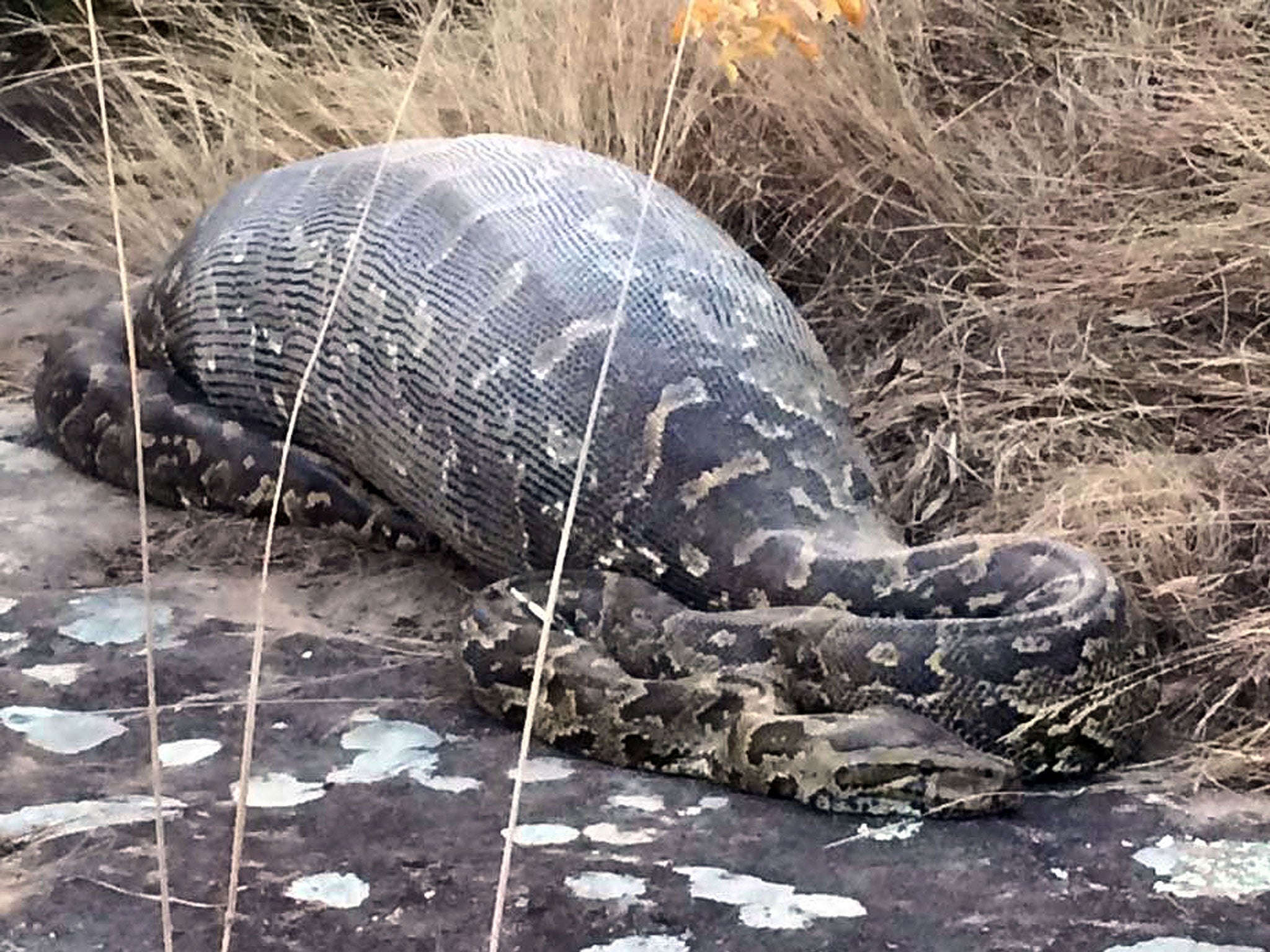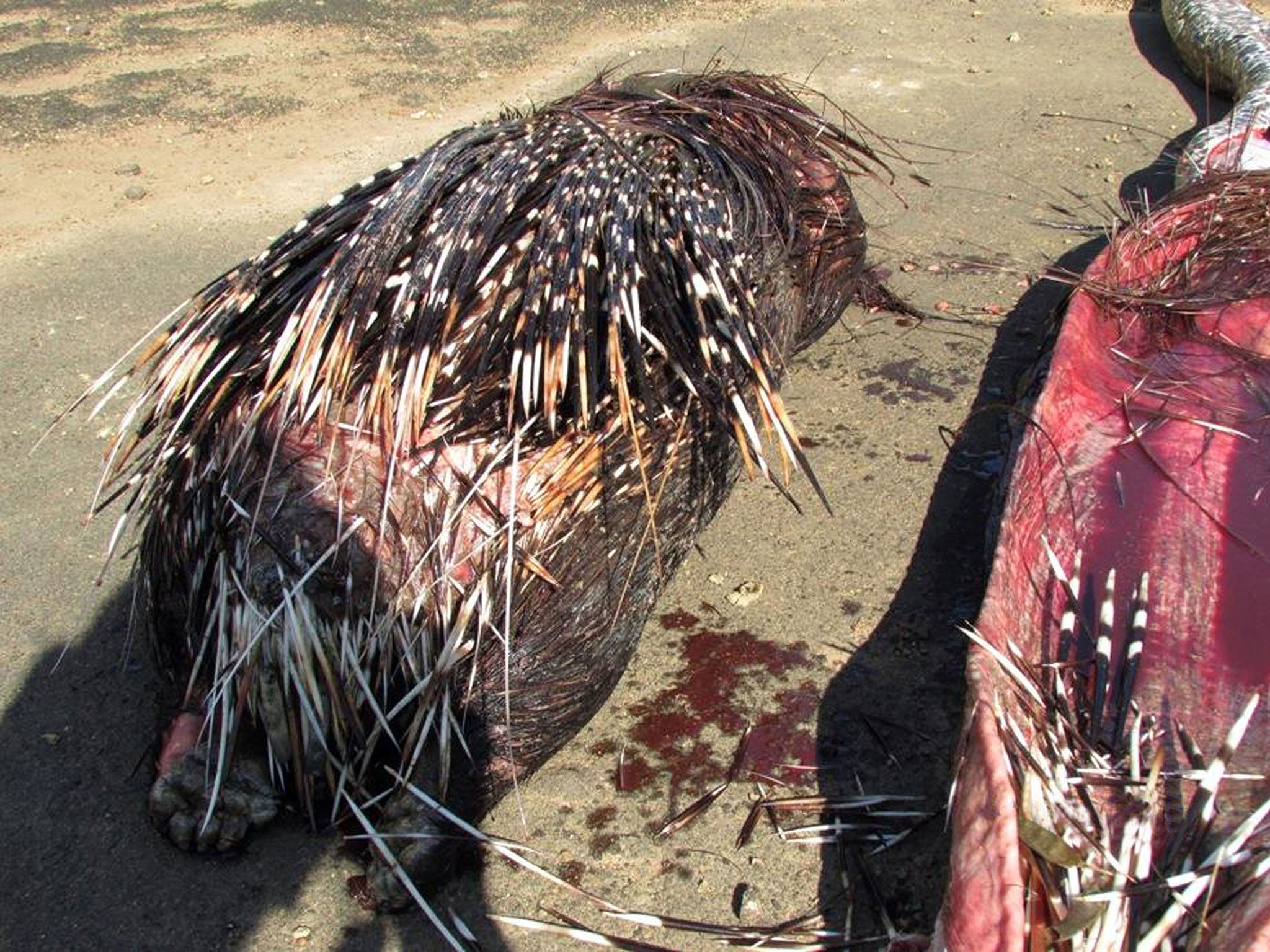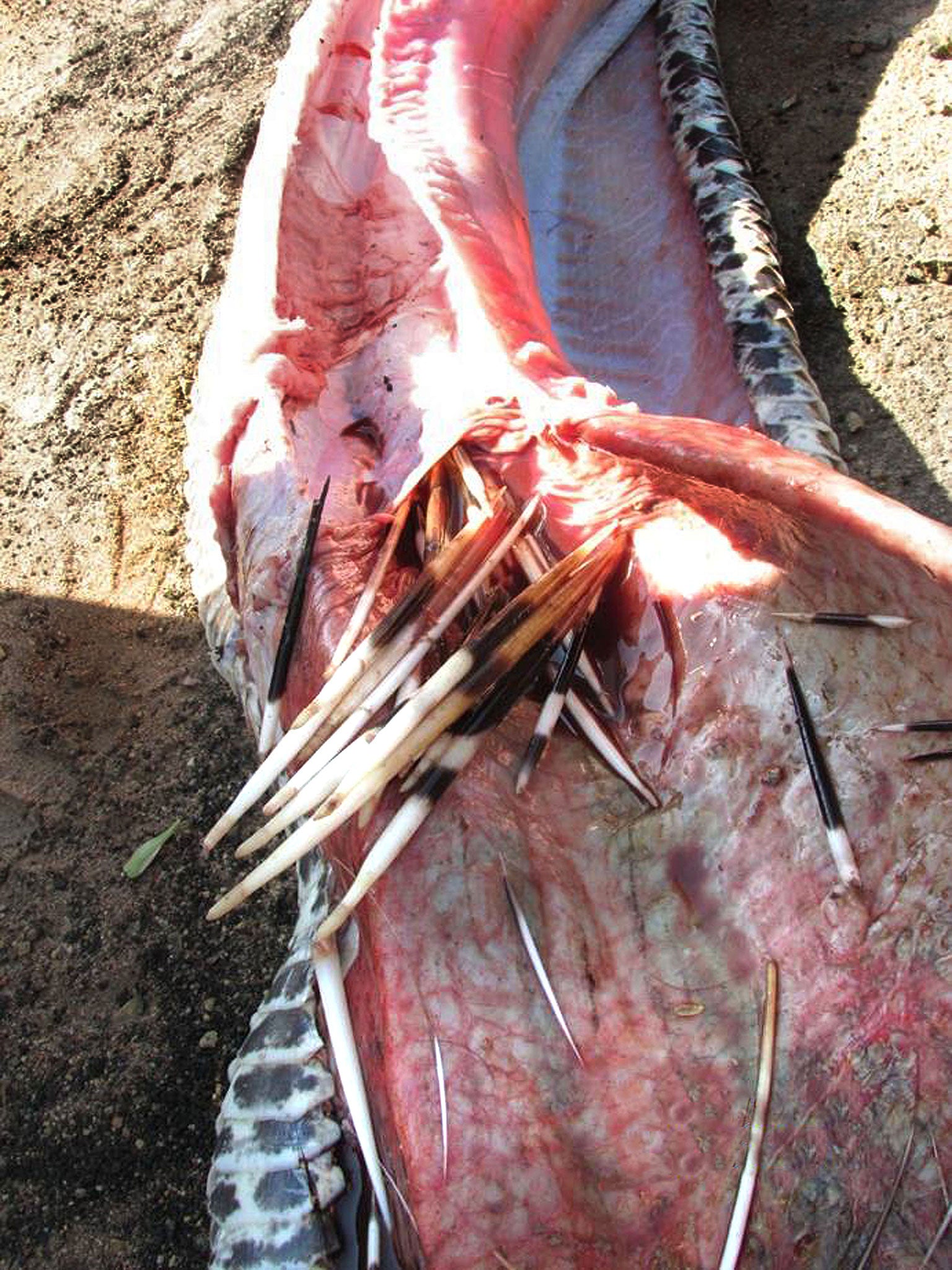Python found dead after swallowing a 14kg porcupine which punctured its insides
Gamekeepers said: 'The exact reasons for the snake's death are not clear. It had fallen off the rocky ledge.'

Your support helps us to tell the story
From reproductive rights to climate change to Big Tech, The Independent is on the ground when the story is developing. Whether it's investigating the financials of Elon Musk's pro-Trump PAC or producing our latest documentary, 'The A Word', which shines a light on the American women fighting for reproductive rights, we know how important it is to parse out the facts from the messaging.
At such a critical moment in US history, we need reporters on the ground. Your donation allows us to keep sending journalists to speak to both sides of the story.
The Independent is trusted by Americans across the entire political spectrum. And unlike many other quality news outlets, we choose not to lock Americans out of our reporting and analysis with paywalls. We believe quality journalism should be available to everyone, paid for by those who can afford it.
Your support makes all the difference.A giant python was found lying dead next to a cycle track after swallowing a 13.8kg (30lb) porcupine, the spines of which punctured the inside of the snake.
Warning: some of the following images in this article may disturb some readers:
The python, nearly four metres (around 12 and a half feet) long, died after falling from a rocky ledge in the Lake Eland Game Reserve in South Africa, a fall which is believed to have forced the quills to puncture its digestive tract.
"It is apparent that several porcupine quills were lodged inside the digestive tract. It had fallen off the rocky ledge.

"We don't know if it died beforehand or whether the fall drove some of the quills into its digestive tract."
After the snake was reported to gamekeepers, they performed an autopsy on the animal to remove the porcupine from its innards.

After cutting the porcupine out, they found the insides of the snake had been pierced by dozens of the animal’s sharps quills.
Many snakes rely on thermal and chemical sensory mechanisms to ambush prey, meaning that some do not see threatening defence mechanisms until they have already swallowed their victims.
Join our commenting forum
Join thought-provoking conversations, follow other Independent readers and see their replies
Comments